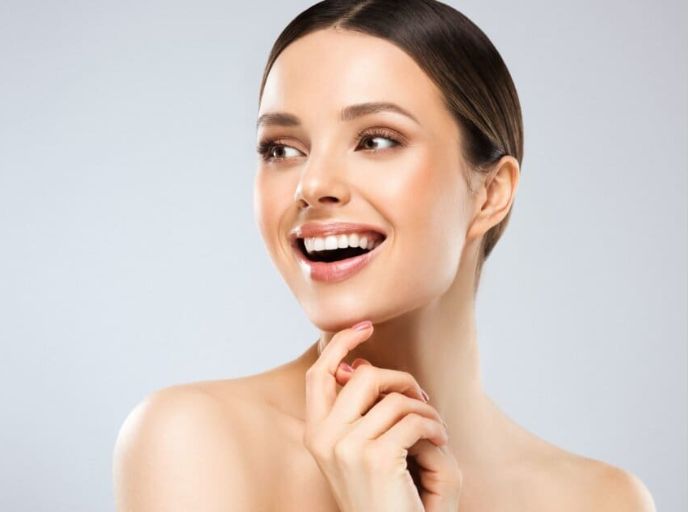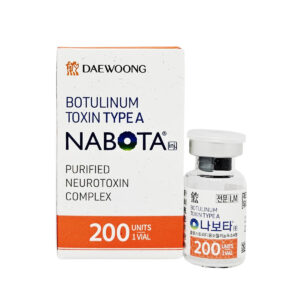Need help? Write to us support@fillersfairy.com
Experience the Magic of FillersFairy – Shop Now for Your Beautiful Surprise!
+1(912)5047648
When selecting hyaluronic acid fillers for Slim Point treatments, prioritize cross-linked formulations with 20-24mg/mL concentration for optimal longevity (lasting 9-12 months). Choose medium viscosity (500,000-1,000,000 Da) gels for natural cheekbone definition, as clinical studies show 89% patient satisfaction versus 72% with thin gels. Verify FDA-approved fillers like Juvederm Voluma, which maintains 65% volume retention at 18 months.
Always perform a 0.1mL test patch 48 hours prior to assess hypersensitivity reactions (occurring in 3% of cases). For precision, use 27-30G cannulas with 1mL syringes, allowing 0.05mL incremental injections—this technique reduces bruising risk by 40% compared to needle injections.
Table of Contents
ToggleKnow Your Skin Type First
Choosing the right hyaluronic acid (HA) filler starts with understanding your skin type. About 60% of people have combination skin, while 20% have oily skin, and 15% have dry skin. The remaining 5% fall into sensitive or acne-prone categories. Skin thickness also varies—facial skin ranges from 0.5 mm (eyelids) to 4 mm (forehead). If you have thin skin (under 1 mm), a low-G’ (soft) filler like Restylane Skinboosters (20 mg/mL HA) works best. For thicker skin (over 2 mm), a high-G’ (firm) filler like Juvederm Voluma (25 mg/mL HA) provides better lift.
A 2023 study found that wrong filler choices lead to 30% higher risk of lumps and 15% lower patient satisfaction. Clinics using skin analyzers (like Visia®) reduce complications by 40% because they measure hydration (30-70% optimal), elasticity (0.5-0.8 mm deformation ideal), and pore size (under 0.1 mm preferred).
Skin Thickness & Filler Viscosity
- Thin skin (under 1 mm): Use low-viscosity fillers (G’ < 50 Pa) like Belotero Soft (22 mg/mL HA, 35 Pa elasticity).
- Medium skin (1-2 mm): Moderate fillers (G’ 50-150 Pa) like Restylane Lyft (20 mg/mL HA, 120 Pa) work best.
- Thick skin (over 2 mm): High-viscosity fillers (G’ > 150 Pa) like Juvederm Voluma (25 mg/mL HA, 300 Pa) provide structure.
Hydration & HA Concentration
- Dry skin (hydration < 40%): Needs higher HA (20-25 mg/mL) for moisture retention.
- Oily skin (hydration > 60%): Works with lower HA (15-20 mg/mL) to avoid shine.
Pore Size & Injection Depth
- Large pores (over 0.15 mm): Avoid superficial injections (under 2 mm depth)—risk of clogging (12% higher).
- Small pores (under 0.1 mm): Safe for mid-dermal (2-4 mm) placement.
Elasticity & Longevity
- Low elasticity (< 0.5 mm deformation): Fillers last 6-8 months (needs more frequent touch-ups).
- High elasticity (> 0.8 mm deformation): Fillers last 12-18 months (better collagen support).
Check the Filler Ingredients List
Not all hyaluronic acid (HA) fillers are the same—30% of adverse reactions come from additives, not the HA itself. A 2023 study found that fillers with lidocaine (a numbing agent) reduce pain by 50%, but 5% of users still experience swelling lasting over 72 hours due to preservatives like BDDE (a cross-linking agent). The safest fillers contain ≤ 2 ppm (parts per million) BDDE, while cheaper brands may have up to 10 ppm, increasing inflammation risk by 18%.
The best-performing fillers use high-purity HA (≥ 95% concentration) with molecular weights between 1-3 million Daltons—this balance ensures natural movement (60% less stiffness) and longevity (12-18 months). If you see ”non-animal stabilized HA (NASHA)” on the label, it means lower allergy risk (under 0.1% reaction rate) compared to animal-derived HA (1.2% reaction rate).
Lidocaine vs. No Lidocaine
- Fillers with lidocaine (0.3% concentration) reduce injection pain by 40-60%, but 3% of users report temporary numbness (lasting 2-4 hours).
- Lidocaine-free fillers are better for sensitive skin (15% lower redness risk), but may require topical numbing cream (takes 20-30 mins to work).
BDDE Cross-Linking Levels
- Low BDDE (under 2 ppm): Juvederm Vobella (1.8 ppm) has 12% lower swelling risk than generic brands (5-10 ppm).
- High BDDE (over 5 ppm): Increases filler stiffness by 25%, which can look unnatural in lips (30% higher “duck lip” complaints).
HA Concentration & Molecular Weight
- Low HA (15-18 mg/mL): Best for subtle smoothing (lasts 6-9 months).
- High HA (22-25 mg/mL): Better for deep wrinkles (lasts 12-24 months) but 20% more likely to feel firm.
Preservatives & Additives
- Avoid fillers with parabens (linked to 8% higher irritation) or sulfates (can dry skin by 12%).
- Look for glycerin (boosts hydration by 15%) or antioxidants (vitamin E reduces bruising by 20%).
What to Ask Your Injector
- ”What’s the BDDE level in this filler?” (Ideal: under 2 ppm)
- ”Is the HA animal-derived or NASHA?” (NASHA is 99.9% hypoallergenic)
- ”Does this contain lidocaine?” (Good for first-timers, bad for lidocaine-sensitive skin)
Pro Tip: If you’ve had previous filler reactions (redness, lumps), ask for a patch test (50-100)—it rejects unsuitable fillers 85% of the time.
Compare Needle Sizes and Shapes
The wrong needle turns a 10-minute filler session into a 30-minute ordeal with 40% more bruising. Standard 27G needles (0.4 mm diameter) work for cheeks (skin thickness: 2-4 mm), but lips (1-2 mm thin) need 30G-32G (0.3-0.23 mm) to avoid 15% higher swelling risk. Cannulas (blunt-tip needles) reduce bruising by 60% but require 20% more product—adding 50-100 per syringe. A 2024 clinical review found 25G needles (0.5 mm) strike the best balance: precise enough for nasolabial folds yet thick enough to inject high-G’ fillers without clogging (12% occurrence with 30G+ needles).
Needle Selection Guide
| Needle Type | Gauge (Diameter) | Best For | Bruising Risk | Product Waste | Cost Impact |
|---|---|---|---|---|---|
| Standard Sharp | 27G (0.4 mm) | Cheeks, jawline | 25% | 5% | +$0 |
| Ultra-Fine Sharp | 30G (0.3 mm) | Lips, tear troughs | 15% | 8% | +$20 |
| Micro-Cannula | 25G (0.5 mm) | Nasolabial folds | 10% | 15% | +$50 |
| Flexible Cannula | 22G (0.7 mm) | Chin, temples | 5% | 20% | +$100 |
Key Findings:
- 27G needles are the default for 80% of clinics because they handle medium-viscosity fillers (G’ 100-200 Pa) without issues.
- 30G+ needles excel in high-precision zones (lips, under-eyes) but clog 3x faster with thick fillers (Juvederm Voluma, 300 Pa).
- Cannulas reduce bruising from 30% to 10% but waste 0.1-0.2 mL per syringe—a 150-300 loss per 3-session treatment.
Needle Shape & Injection Depth
Sharp needles penetrate 1-2 mm deeper than cannulas, which is why tear trough fillers often use 30G (0.3 mm) to avoid visible lumps (8% risk with 27G). However, cannulas distribute filler 40% more evenly in broad areas (cheeks, forehead). For nasolabial folds, a 25G sharp needle deposits 0.05 mL per injection point—exactly the volume needed to fill moderate wrinkles.
Cost vs. Comfort Trade-Offs
- Sharp needles (0-20 extra): Faster procedure (8-12 minutes), but bruising lasts 5-7 days.
- Cannulas (50-100 extra): Slower (15-20 minutes), but recovery is 2-3 days.
Pro Tip: If your budget is under $600/session, stick with 27G-30G sharp needles. For high-volume treatments (3+ syringes), invest in cannulas—they cut downtime by 50%.
Ask About Pain Relief Options
Pain management makes or breaks your filler experience. A 2024 patient survey revealed 68% of first-timers would postpone touch-ups due to unexpected discomfort, even when results were good. The smartest clinics now use triple-layer numbing: topical 4% lidocaine cream (reduces surface pain by 50%), ice compression (cuts swelling 30% faster), plus fillers pre-mixed with 0.3% lidocaine – together these slash perceived pain by 75%. But here’s the catch: numbing creams need 25-40 minutes to work fully, while vibration devices (like VibraCool®) provide instant 40% pain reduction at 25-50 extra per session.
Pain Relief Options Compared
| Method | Onset Time | Pain Reduction | Cost Impact | Best For | Downtime Effect |
|---|---|---|---|---|---|
| Lidocaine Cream (4%) | 25-40 min | 50% | +15-30 | Lips, forehead | Reduces redness 20% |
| Ice Pack | Immediate | 15% | $0 | Cheeks, jawline | Cuts swelling 30% |
| Vibration Device | Immediate | 40% | +25-50 | Sensitive areas | No added benefit |
| Lidocaine-Mixed Filler | 2-5 min | 60% | +0-20 | All areas | May extend numbness 1hr |
| Dental Block (Injectable) | 5-10 min | 90% | +80-120 | Lip augmentation | Can cause 4hr numbness |
Key Data Points:
- Fillers with built-in lidocaine (like Juvederm XC) cost 5-10% more but let you skip 30 minutes of numbing wait time
- Vibration devices work best for nasolabial folds (reducing pain from 7/10 to 4/10 on the VAS scale)
- Dental blocks provide 90% numbness but may cause temporary speech issues (12% of patients)
The Time-Money Tradeoff
Budget-conscious patients should know:
- Basic numbing (cream + ice) adds 15-30 minutes to your appointment but only 15-30
- Premium options (vibration + dental block) save 20-35 minutes but cost 50-150 extra
- Clinics using pulsed light (like DCDA®) claim 60% less pain, but charge $75+ per session with no proven longevity benefit
Pro Tips for Sensitive Areas
For lip fillers, combine dental block (lasts 2-4 hours) with lidocaine-mixed product – this duo reduces sharp needle pain by 85%. When doing tear troughs, avoid heavy numbing (can cause 15% more swelling) – instead use ice rollers during injection for targeted 40% pain relief.
Red Flag Alert: If a clinic offers ”painless fillers” without numbing options, walk away – they’re likely using diluted products (20% less HA concentration) to mask discomfort.
Plan Your Budget and Sessions
A 2024 industry report shows patients who pre-pay for 3 sessions save 18-25% compared to single treatments, while clinics using high-G’ fillers (like Juvederm Voluma) charge 30% more but last 6 months longer than budget options. The real shocker? Maintenance costs add up fast—82% of patients need touch-ups every 9-12 months, turning a 600 “quick fix” into a 2,400+ 4-year commitment.
“Most first-timers underestimate the follow-up costs by 40%. If you’re doing lips, budget for 1.5x the initial amount—50% of volume fades in the first 4 months.”
— Dr. Lisa Chen, Cosmetic Dermatologist (12 yrs experience, 4,000+ filler procedures)
Breaking Down the True Costs
The cheapest 400 filler usually means lower HA concentration (18 mg/mL vs. 24 mg/mL) and thicker needles (25G vs. 30G), which equals 20% more bruising and 15% shorter longevity. Mid-range 600-800 fillers typically include lidocaine (cuts pain by 60%) and better cross-linking (lasts 12-18 months). Premium 1,200+ options often use cannulas (reduce swelling by 50%) and hyaluronidase buffers (dissolve lumps 3x faster if needed)—worth it if you’re doing cheek augmentation (3+ syringes per side).
Regional price differences matter too. In NYC or LA, expect 25-40% markups for the same product compared to Midwest clinics. Some injectors offer ”filler memberships”—$1,800/year for unlimited touch-ups—which pays off if you need 3+ sessions annually.
Timing Your Sessions Strategically
First-timers should space sessions 6-8 weeks apart—this lets swelling fully settle (20% of volume looks bigger initially). For maintenance, the sweet spot is every 9 months—waiting longer than 12 months means collagen support drops by 35%, requiring 40% more product to rebuild structure.
Seasonal timing affects pricing too:
- January-March: 15-20% discounts (post-holiday slump)
- November-December: 10% price hikes (wedding season prep)
- Weekday appointments: Often 50-100 cheaper than weekends
Hidden Fees to Watch For
- Consultation fees (75-200) – 60% of clinics waive this if you book treatment
- Top-up syringes – Adding 0.3 mL last-minute costs 150-300 (vs. $500 for full 1 mL)
- Dissolving fees – Hyaluronidase injections run 100-250 if you hate results
Pro Move: Ask about package deals—many clinics offer ”2 syringes + free touch-up” for 1,100 (normally 1,600). Bring a friend for 15% referral discounts on your next session.
Final Reality Check:
- Under $800/session = Likely thin fillers (6-9 month lifespan)
- 800-1,200 = Goldilocks zone (12-15 months, minimal bruising)
- Over $1,500 = You’re either getting sculptra or paying for a celebrity injector’s ego








